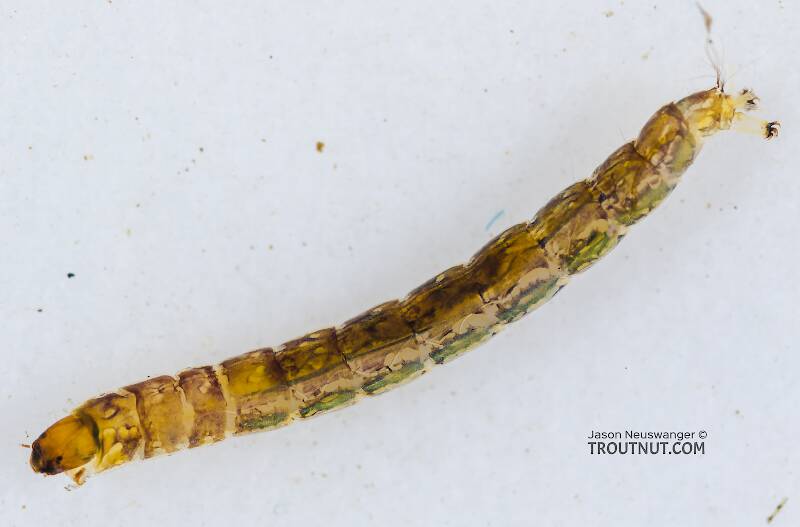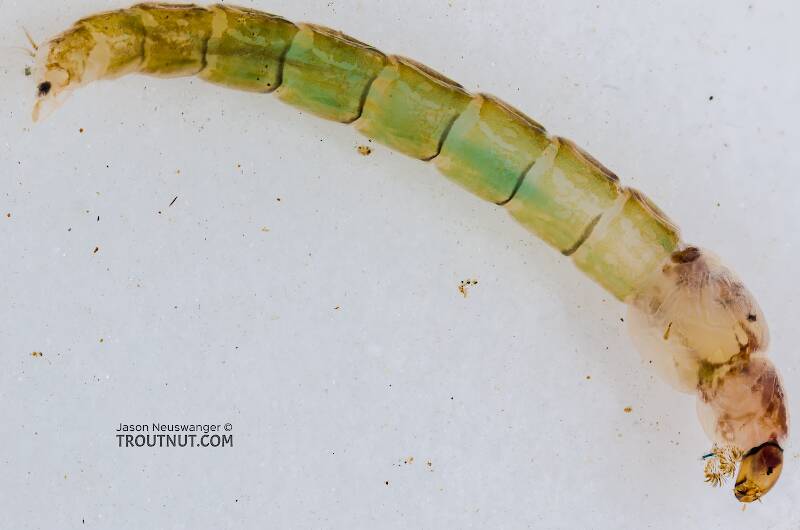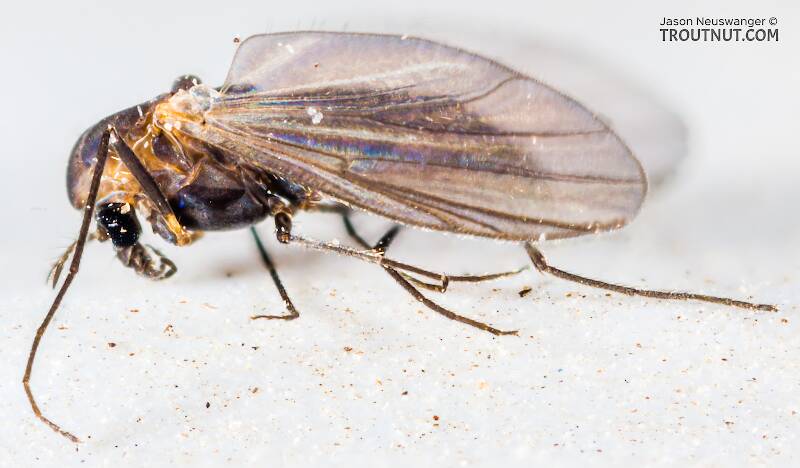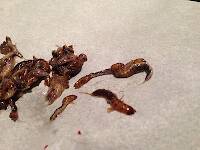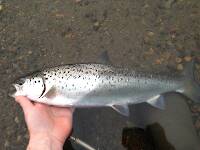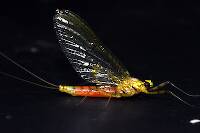
Blue-winged Olives
Baetis
Tiny Baetis mayflies are perhaps the most commonly encountered and imitated by anglers on all American trout streams due to their great abundance, widespread distribution, and trout-friendly emergence habits.
Featured on the forum


Troutnut is a project started in 2003 by salmonid ecologist Jason "Troutnut" Neuswanger to help anglers and
fly tyers unabashedly embrace the entomological side of the sport. Learn more about Troutnut or
support the project for an enhanced experience here.
This topic is about the True Fly Family Chironomidae
Midges are the most important aquatic insects in some places, especially fertile spring creeks where they are extremely abundant and the current is so slow that it's efficient for trout to surface feed on very tiny insects.Some midges are large, up to hook size 14, but the majority are size 22 or smaller. The number of genera and species is hopelessly huge for angler entomologists to ever learn, and the identifing characteristics often require slide-mounting tiny parts under high-powered microscopes. Even the most Latin-minded fisherman must slip back to the basics--size and color--to describe his local midge hatches.
Example specimens
Leahdanger
Posts: 1
Posts: 1
Leahdanger on Mar 7, 2014March 7th, 2014, 8:31 am EST
Hi,
I am trying to identify the life cycle of a few aquatic insects in eastern British Columbia. Specifically, I want to know if the species I collected in the fall (Aug-Oct) are a different hatch from the species I collected in the spring (April-May). Does anybody know when the following species lay eggs, die, and hatch: amphipods (Hyalella aztecha), chironomids, leeches, mayflies (Leptophlebiidae paraleptophlebia, Baetida sp.), and caddis flies (Oxyethira sp., Hydropsychidae arctopsyche)? For my purposes, knowing the general life cycle of amphipods and chironomids would be great.
Thanks much for your help!
Leah
I am trying to identify the life cycle of a few aquatic insects in eastern British Columbia. Specifically, I want to know if the species I collected in the fall (Aug-Oct) are a different hatch from the species I collected in the spring (April-May). Does anybody know when the following species lay eggs, die, and hatch: amphipods (Hyalella aztecha), chironomids, leeches, mayflies (Leptophlebiidae paraleptophlebia, Baetida sp.), and caddis flies (Oxyethira sp., Hydropsychidae arctopsyche)? For my purposes, knowing the general life cycle of amphipods and chironomids would be great.
Thanks much for your help!
Leah
Taxon on Mar 7, 2014March 7th, 2014, 1:14 pm EST
Hi Leah-
You really can't "know if the species I collected in the fall (Aug-Oct) are a different hatch from the species I collected in the spring (April-May)" by simply being provided answers to the questions you posed. It isn't my intent to pick on you, but the questions you posed are way to general answer, and with one exception, they don't even refer to a species.
You really can't "know if the species I collected in the fall (Aug-Oct) are a different hatch from the species I collected in the spring (April-May)" by simply being provided answers to the questions you posed. It isn't my intent to pick on you, but the questions you posed are way to general answer, and with one exception, they don't even refer to a species.
PaulRoberts on Mar 9, 2014March 9th, 2014, 6:05 pm EDT
Leah, I'd suggest you start by searching "life cycle" with Chironomidae"(family), “Hirudinea” (subclass), and “Amphipoda” (order) to learn the basics of their general life cycle. You are likely to find diagrams for some (check Google Images). Others may be descriptions. I just tried “Life Cycle” with “Hyalella aztecha”(species) and found this (can't vouch for identification accuracy though):
http://www.killiclubdefrance.org/forum/index.php?topic=5272.0
As to egg laying in the macroinverts you listed, just Google them. You can get a rough idea of mating activity times by finding emergence/hatch charts/tables for your area. Realize these may not be entirely accurate due to misidentifications, regional and local variations. But it's a start. That’s what this site is in part dedicated to. Welcome to the HUGE world of tiny critters.
http://www.killiclubdefrance.org/forum/index.php?topic=5272.0
Life Cycle:
This little amphipod will mate several times per year. If you observe the courtship closely you will notice that the male will carry the female on his back, for about a week, whilst swimming, during the copulation process. Females will normally produce around 40-50 fertilised eggs in her brood pouch which show up as being orange in colour and are conspicuous through her semi-transparent body. The tiny shrimp hatch within the egg pouch of the female and emerge as microscopic, fully developed young.
They will then develop an exo-skeleton and will shed this (moult) several times as they grow. The shrimp have no natural defences against predators so they will hide in any dark areas of the tank. They will however become more active under low light conditions or after dark.
As to egg laying in the macroinverts you listed, just Google them. You can get a rough idea of mating activity times by finding emergence/hatch charts/tables for your area. Realize these may not be entirely accurate due to misidentifications, regional and local variations. But it's a start. That’s what this site is in part dedicated to. Welcome to the HUGE world of tiny critters.
Entoman on Mar 9, 2014March 9th, 2014, 7:27 pm EDT
Welcome Leah! I don't mean to toot our own horn, but reviewing the hatch pages in the encyclopedia on this site is the best way to start. It's the most user friendly layout on the web, IMO. It will help you to keep the hierarchy of all the orders and families in perspective and keep confusion to a minimum. Ok, maybe I am tooting a little....:)
"It's not that I find fishing so important, it's just that I find all other endeavors of Man equally unimportant... And not nearly as much fun!" Robert Traver, Anatomy of a Fisherman
Quick Reply
Related Discussions
Topic
Replies
Last Reply
6
Nov 12, 2006
by Martinlf
by Martinlf
4
Jun 10, 2013
by Oldredbarn
by Oldredbarn
8
Jan 7, 2009
by Dgracia
by Dgracia


